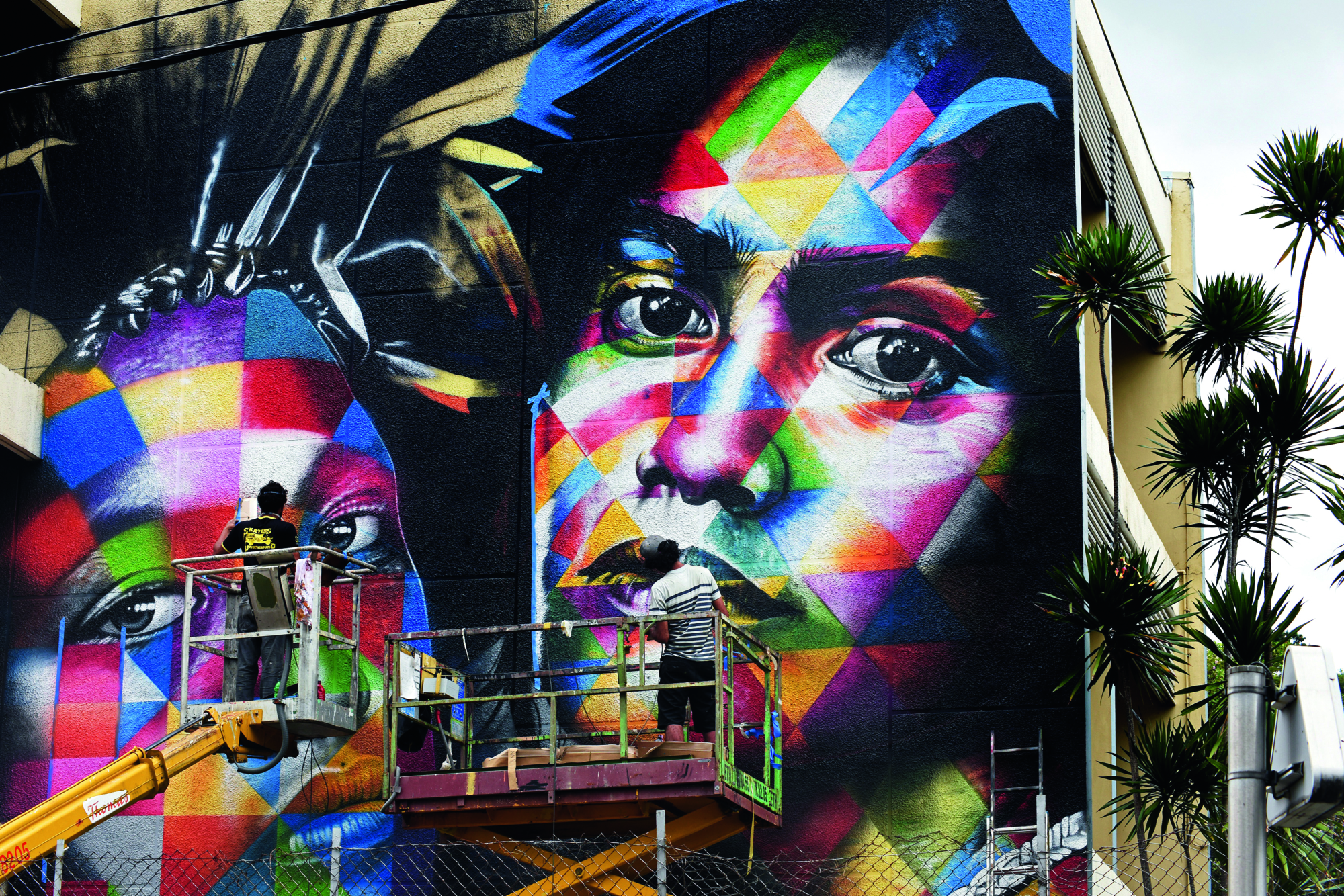Brazilian soccer fans would rather not be reminded of the 2018 FIFA World Cup quarter-final against Belgium. The European team broke hearts all over the football-mad South American nation, winning by the narrowest of margins, 2–1.
It’s an upset that leaves Australian documentary filmmaker Selina Miles feeling a little bit guilty, she confides as we sit down together with renowned graffiti photojournalist Martha Cooper – the subject of Miles’ debut documentary feature, Martha: A Picture Story (2019) – at the Sofitel hotel’s Atrium Bar during last year’s Melbourne International Film Festival. As it happens, the Brazilian defeat ensured the filmmaker was able to secure a crucial interview for the film, helping trace the global impact of Cooper’s tireless work photographing the leading lights of the worldwide graffiti scene.
Picture the scene: Miles had just touched down in São Paulo the very day of the quarter-final, the air electric with anticipation. She was there to talk with two of the country’s most celebrated graffiti artists, Otavio and Gustavo Pandolfo. Going by the moniker OSGEMEOS – Portuguese for ‘The Twins’ – they were greatly influenced by their first glimpse of a black-and-white photocopy of Cooper’s seminal 1984 ‘graffiti bible’ Subway Art (co-authored with Henry Chalfant), which they coloured in by hand. Miles recalls:
We were like, ‘If they win, we’re not gonna get our interview,’ and so I feel bad, because I was like, ‘Please let Brazil lose, please let them lose.’ And they did, thank God, because the guys are very patriotic, and I think they wouldn’t have done the interview otherwise.
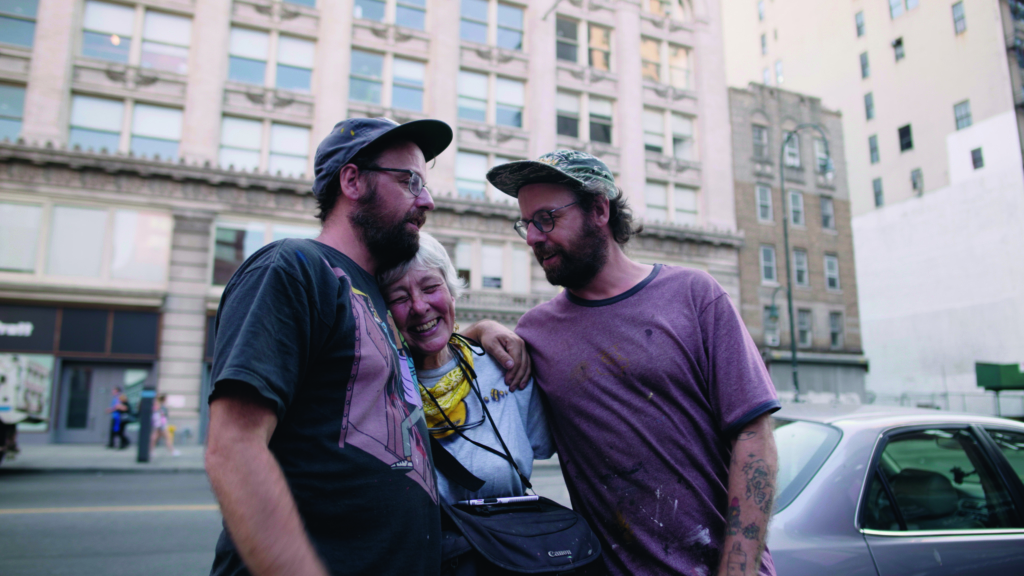
Cooper agrees. ‘The whole city would have just exploded,’ she says, laughing. Luckily for Miles, no national celebration meant she got her interview, and the praise the men shower on Cooper made her flying mission worth it. Miles says the strength of goodwill towards Cooper is part of a bigger picture of mutual respect among the leading lights of the graffiti scene worldwide. ‘It’s not just a hobby for a lot of people,’ she says. ‘It’s a community – a reason to travel or learn new languages. It’s a way of making friends, a career path.’
The praise is anything but obsequious, Miles insists. ‘It’s not fandom; it’s gratitude, which is really special.’ Even the identical twins’ mum adds her two cents worth. She says they viewed Subway Art with awe. ‘They used to pick up the book as if it was a pot of gold,’ she says.
Debuting at the Tribeca Film Festival, Martha: A Picture Story also won the Audience Award for Best Documentary at the 2019 Sydney Film Festival. Its loving portrait of a genuinely humble, good-humoured Cooper is a joy to behold. ‘It wasn’t until I started on the project that I realised there’s more to Martha’s story than just that book,’ Miles says.
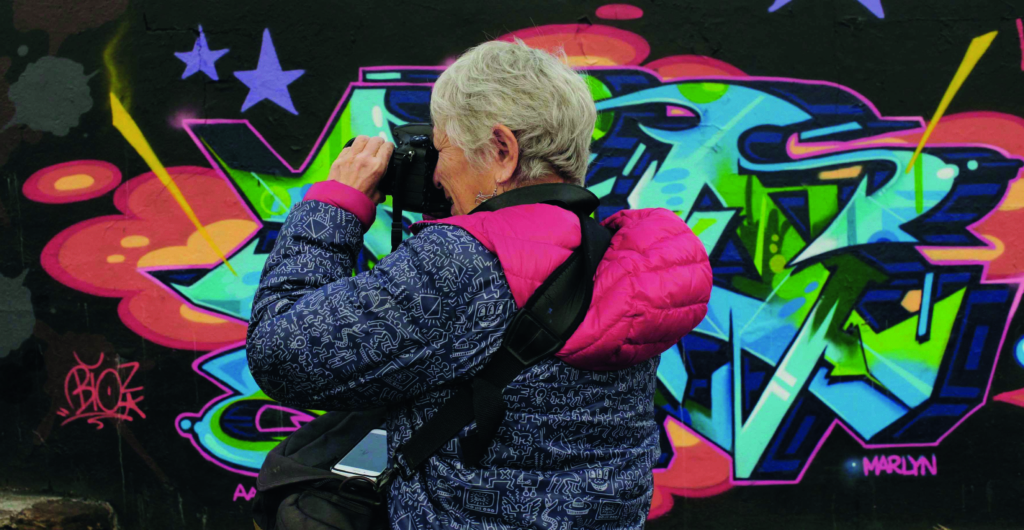
Regarded as something of a living legend among the graffiti community worldwide, and also within overlapping artforms including breakdancing and parkour, Cooper first became fascinated with documenting the evolving artform while she was an exceedingly rare female photojournalist for the New York Post in the 1970s and 1980s. As a young woman, she had spent two years with the Peace Corps in Thailand, specifically in the hope of securing an internship with National Geographic. A motorbike tour of South East Asia to England got her that gig, but ultimately it wasn’t a good fit. They overlooked her early interest in photographing tattooists in Tokyo, as well as her eye for graffiti.
Cooper fell in love with the vibrant tags scrawled over city walls after separating from her husband and decamping to New York permanently. A profile of Cooper by journalist Barbara Graustark, published in The New York Times in 2009, the year Subway Art was re-released, notes that it was a young graffiti artist going by the moniker He3 who was the first to suggest she capture his work.
I didn’t get it. It was mysterious and illegible to me. So that was the ‘Aha’ moment – when I recognized that He3 was really a graphic designer, designing his personal logo.[1]Martha Cooper, quoted in Barbara Graustark, ‘Chronicler of the Furtive Arts’, The New York Times, 10 April 2009, <https://www.nytimes.com/2009/04/12/nyregion/thecity/12coop.html>, accessed 8 May 2020.
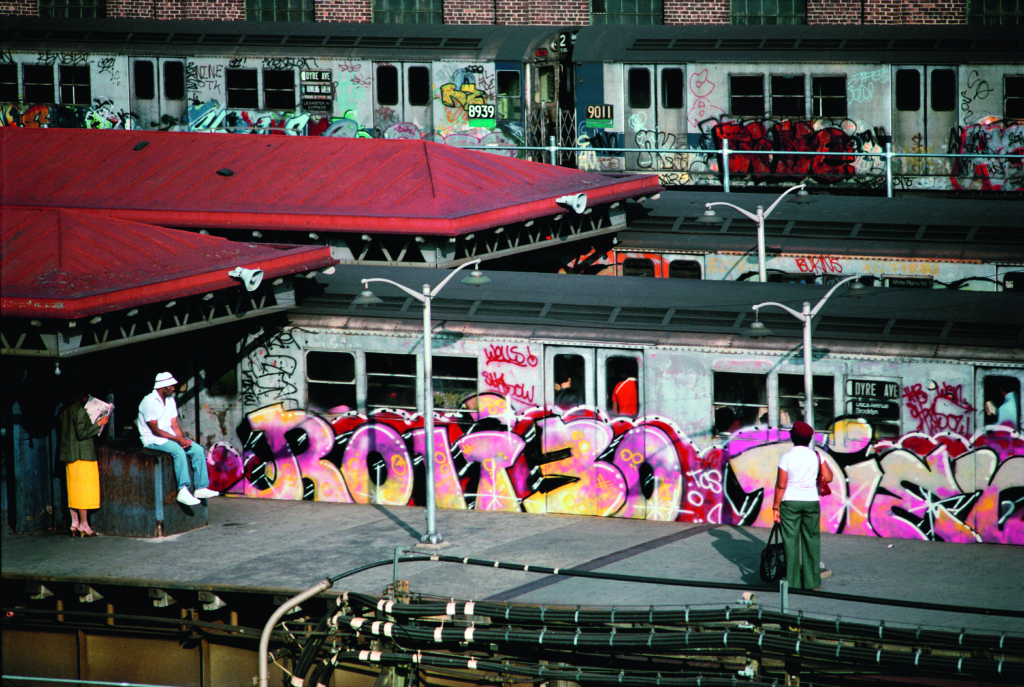
The New York Times profile adds that Cooper has been taking photographs ‘since age 5, when her father, the owner of a Baltimore camera shop, gave her a Brownie camera’.[2]Graustark, ibid. Cooper herself recalls, in the feature, that her father
would take me on what he called camera runs with the Baltimore Camera Club. You walk down the street and you see something and you’re excited by it. And you take a picture.
Making a career of it, Cooper was particularly impressed with the work of Donald White (aka Dondi), but editors were slow to pick up on the merits of graffiti, she tells me. She certainly experienced sexism, too, but was undeterred. ‘It was the height of the feminist movement, which drove me to leave my husband and go to New York, which was the centre of publishing at the time,’ she recalls.
When I worked for the Post, I was the only woman, and I did face discrimination because of that. But also, I was hired because I was a woman. The photo editor, Susan Welchman, who’s in the documentary, she wanted a woman on the staff. So it was a positive thing. I got lucky, even though there were some bad times with the guys.
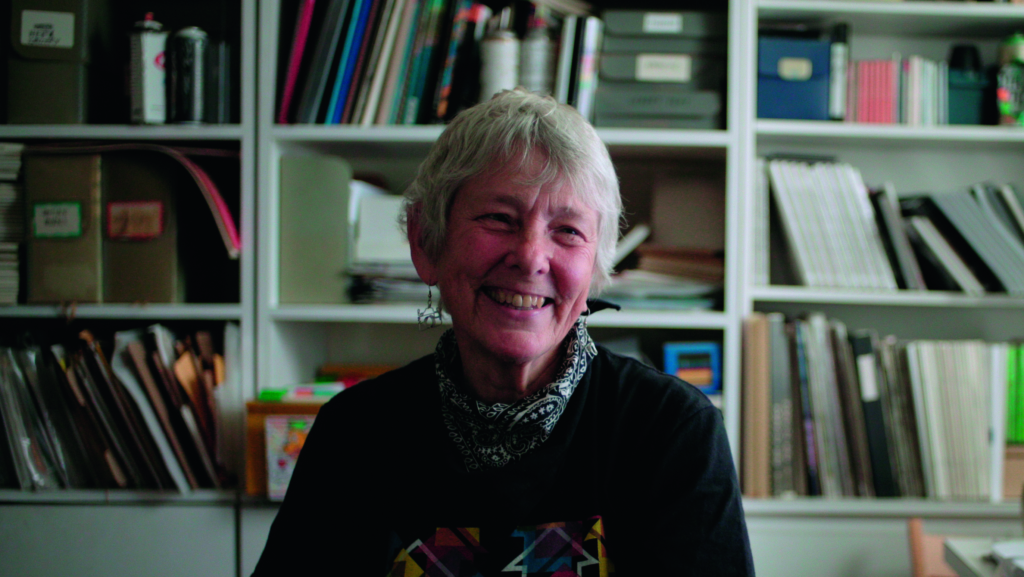
Cooper’s ex-husband was an anthropologist, and she says their time together has helped inform the way she sees her own work, as a participant observer. ‘You’re in it, but on the other hand, you’re not in it 100 per cent the way the participants are in it. You’ve got an eye on it.’
His field work took them to a Japanese village for a year, where a bemused Cooper was expected to bow and serve tea to his visitors. ‘That was completely foreign to me, but that was basically what I had to do to participate in the life of the village.’ Her time serving with the Peace Corps in Thailand found her similarly having to adapt to expectations. ‘You can’t say, “Well, I don’t think women ought to have to bow like that,”’ she notes. ‘So I had already been in two situations where I kind of had to go with the flow.’
This adaptive approach to participative observation stood her in good stead when it came to snapping graffiti artists, Cooper recalls.
I tried to take pictures of their work in the ways that they would like, which is not to have acute angles, you know, or try to make my own art out of their art, you know. I tried to get straight-on pictures.
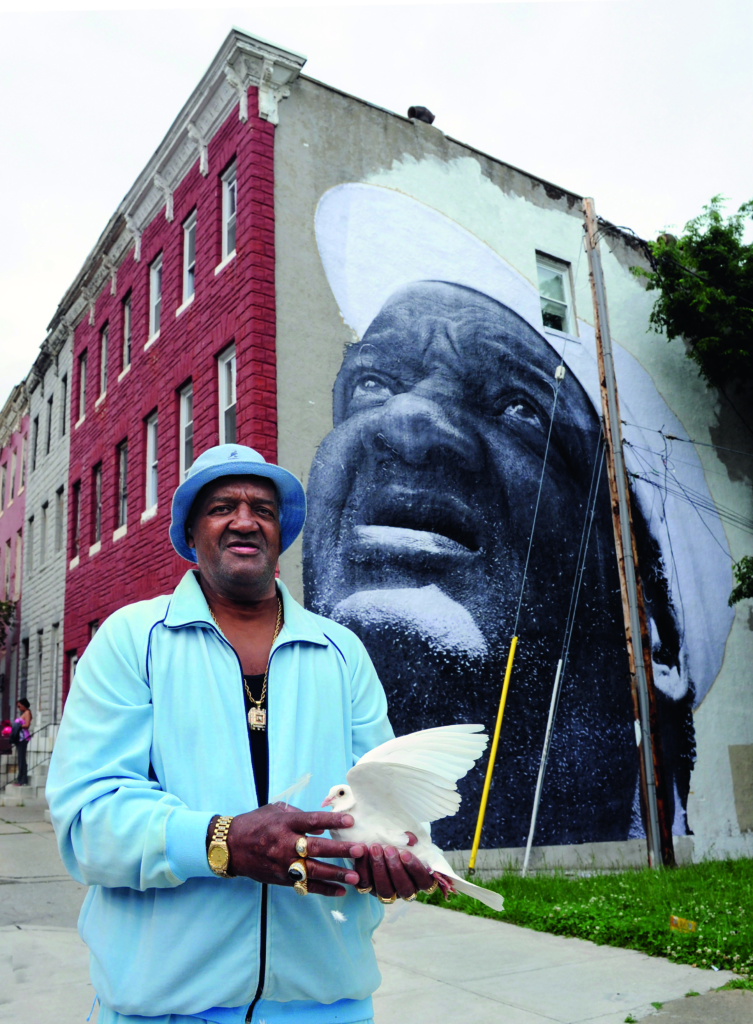
This approach also informed how Miles captured Martha: A Picture Story, she says. ‘I shot on 35 mil, and it’s all very direct,’ Miles says. ‘There’s no cinematography trying to influence anything. It’s just: here’s the info. And that’s inspired by the way that Martha approaches her photography.’ Even the way she shot the Pandolfos is a tribute to the Chalfant-produced PBS hip-hop documentary Style Wars (Tony Silver, 1983), to which Cooper contributed stills photography, and which The New Yorker describes as ‘one of the rare films that seems to have been made at exactly the right time and place’[3]Daniel Penny, ‘The New Yorker Recommends: Style Wars’, 25 June 2018, <https://www.newyorker.com/recommends/watch/style-wars>, accessed 8 May 2020. for its early insights into the converging worlds of graffiti, breakdancing and rap just before they exploded into the public consciousness.
‘I framed that shot of OSGEMEOS with their mom the same way Style Wars did with [graffiti artist] Skeme and his mom,’ Miles tells an unaware Cooper. ‘It was kind of an homage.’ Even with Style Wars highlighting an obviously exploding scene, many disdainful newspaper and magazine editors remained steadfastly unconvinced of its merits. North of fifty publishers passed on the opportunity of snapping up Subway Art, some quite brutally, Cooper recalls.
These people lived in New York City and were confronted with graffiti on the subways. The insides of the trains were just a horrible mess, and they were like, ‘We don’t need it. We don’t even want to talk about it.’ So Subway Art was published in England.
It was not an immediate bestseller, with OSGEMEOS far from the only fans to get their hands on a bootlegged copy. Now widely regarded as a touchstone text, it had sold over half a million copies by the time the twenty-fifth-anniversary reprint was published in 2009.[4]Adam Mansbach, ‘Reissued Subway Art Is Still Moving’, Boston.com, 8 August 2009, <http://archive.boston.com/ae/books/articles/2009/08/08/reissued_subway_art_is_still_moving/>, accessed 8 May 2020. I wonder if Cooper ever chuckles when thinking about the foolishness of the many people who closed the door on her passionate work.
‘I mean, I’d like to think that they’re flagellating themselves,’ she laughs. But, in truth, Cooper seems almost embarrassed by the high regard in which she is held. Miles says this respect meant making Martha: A Picture Story was a good deal more straightforward than it might otherwise have been:
Every contributor I asked to be involved who knew Martha said yes; and not only did they say yes, it was like a mantra […] ‘I’d do anything for Martha – like, anything that she needs. I’ll do it.’ And that made it really easy for me. I kind of inherited her access. Everybody, I think, understands that if it wasn’t for all that work that she put in in the seventies and eighties with Henry, without expecting anything in return, the movement wouldn’t have had as much impact.

Miles had been intimately aware of Cooper before they met in person. ‘You don’t get very far into being interested in graffiti and street art without coming across Martha’s work, because she’s just so prolific,’ she observes.
Several of Miles’ friends were involved in the Australian graffiti scene. It’s what encouraged her to pick up her first video camera in her early twenties, and she went on to shoot the six-part 2017 documentary miniseries The Wanderers about Australian street artists for ABC TV. ‘So [graffiti and film] have kind of been parallel all the way through my career,’ she says.
Miles first met Cooper in person at the Ono’u street-art festival in Tahiti in 2014. The latter was the official photographer, with the director buddying along. ‘It was a really good way for us to meet, because we got to know each other well, working together,’ the younger woman recalls. The decision to turn her camera on Cooper took a little longer, with the initial idea being that it would be a short film. ‘I didn’t intend to hoodwink her,’ Miles says, of supersizing to a feature-length documentary. ‘I hoodwinked myself.’
Cooper recalls being particularly impressed with Miles’ drone work in Tahiti. ‘You know, I carry a lot, but Selina is schlepping all this video equipment plus a drone,’ she says. It’s not a technique Cooper has any intention of embracing. ‘I’m too careless,’ she insists. ‘I’d be afraid I’d chop somebody’s head off or break a window.’

Now in her seventies, Cooper shows no signs of slowing down – or, at least, very few. One of the documentary’s most thrilling sequences sees her join Berlin-based collective 1UP on illegal subway and train-depot sprays fuelled by fire-extinguishers, in which she has to roll under a stationary train. I suggest that the planning we witness makes it feel a little like a heist movie. Cooper agrees. ‘In order to pull off some of these exploits, they need to really plan in advance,’ she says. ‘They have lookouts and know what they’re doing.’
And they didn’t slow down for Cooper. ‘I had a hard time keeping up physically,’ she says. ‘They really didn’t pamper me.’
I suspect that’s the way she prefers things. While Cooper says she’d have to think hard about getting that stuck in again, Miles isn’t convinced. ‘She’ll say she’d say no, but she would.’ Her admiration for Cooper is as clear as it is for the many artists interviewed in the film.
No-one gets to know what impact what they’re doing is going to have on other people. All you can do is kind of hope. But, in this case, I think it’s undeniable that what Martha has done is going to be remembered by history.
Martha: A Picture Story has a hand in ensuring that legacy. Cooper, as modest as ever, blushes: ‘You know, I can die happy.’
Endnotes
| 1 | Martha Cooper, quoted in Barbara Graustark, ‘Chronicler of the Furtive Arts’, The New York Times, 10 April 2009, <https://www.nytimes.com/2009/04/12/nyregion/thecity/12coop.html>, accessed 8 May 2020. |
|---|---|
| 2 | Graustark, ibid. |
| 3 | Daniel Penny, ‘The New Yorker Recommends: Style Wars’, 25 June 2018, <https://www.newyorker.com/recommends/watch/style-wars>, accessed 8 May 2020. |
| 4 | Adam Mansbach, ‘Reissued Subway Art Is Still Moving’, Boston.com, 8 August 2009, <http://archive.boston.com/ae/books/articles/2009/08/08/reissued_subway_art_is_still_moving/>, accessed 8 May 2020. |
